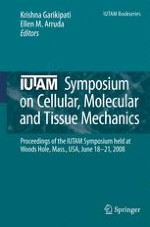2010 | Buch
IUTAM Symposium on Cellular, Molecular and Tissue Mechanics
Proceedings of the IUTAM symposium held at Woods Hole, Mass., USA, June 18-21, 2008
herausgegeben von: Krishna Garikipati, Ellen M. Arruda
Verlag: Springer Netherlands
Buchreihe : IUTAM Bookseries (closed)
